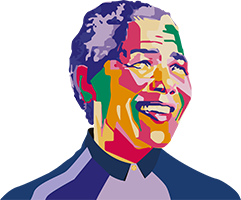Soccer Without Borders: How the world's most popular sport is helping displaced refugee youth find h
Laureus speaks with Soccer Without Borders’ Ben Gucciardi and Mary Connor on the opportunities and challenges for newcomers to the US and how soccer is supporting their resettlement.

The struggle, Gucciardi explains, is sustaining a level of resources and funding that encourages a “continuation” of coaching staff and teachers that make a real impact in a young person’s life. As of this year, 28 per cent of SWB’s coaches are alumni, and Gucciardi says they have been invaluable for inspiring refugee youth to get involved in local soccer programs.
“When we consider newcomer communities and refugee populations, they are groups that have received more attention in recent years and has become a more polarizing issue in the US,” Gucciardi continues, “In general, it’s a community that’s really under-resourced and that leads to social isolation.
“When you think about education and this moment where we find ourselves confronted with the Great Resignation across sectors, and this big revolving door of teachers, principals, and school staff, it becomes difficult to build a culture and to have a vision for what a space can look like for young people.
“Outreach is therefore really important,” Gucciardi goes on, “whether through partnerships with schools, or working with alumni in communities, or building transport links so young people can access local programs which encourage children to get involved in soccer. Having a coach or teacher that provides that stability encourages children to keep coming back and creates an environment where they can feel at home and helps young people to succeed".
Having a coach or teacher that provides that stability encourages children to keep coming back and creates an environment where they can feel at home and helps young people to succeed.

Originally founded in 2007 in partnership with Oakland International School, in California, SWB’s programs have expanded to multiple locations across the US, including the east-coast city of Baltimore, in Maryland. Its role is to “turn the soccer field into a living classroom”, explains Mary Connor, SWB’s co-founder and executive director, who insists soccer can “create a home” for people who have experienced displacement.
“We see the potential for soccer to go beyond the sport itself,” she continued, “and become a learning environment and be used as a space to address community issues and interpersonal exploration for children to reach their potential. The sector evolved a lot since our inception and in a big part that’s due to Laureus. There’s now a lot of organizations using soccer as a tool for social development.”
Of those seeking asylum in the US, Connor says there are many who suffer from some form of trauma. She cites the 40-year struggle faced by youth living in Afghanistan, for example, which she believes has become “more acute” ever since the withdrawal of US troops from the country last year.

There are concrete ways soccer can make itself more accessible and be a leader and find a way to allow people who have lost their identity to find a space that feels like home. That’s what we aim to achieve.”













